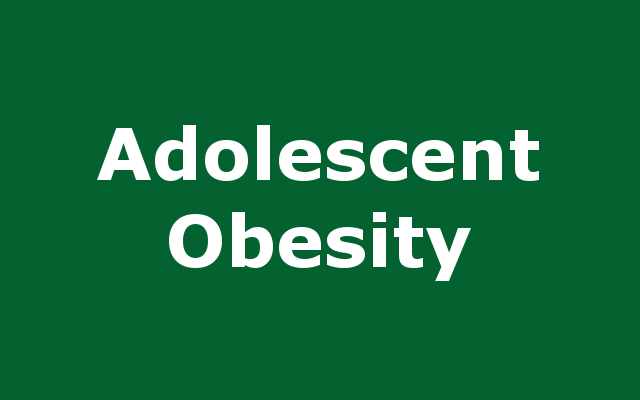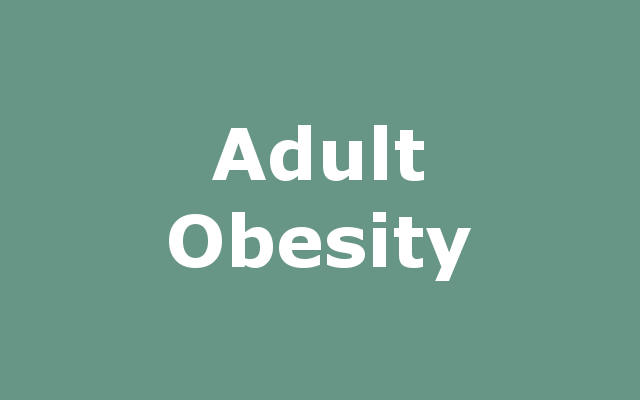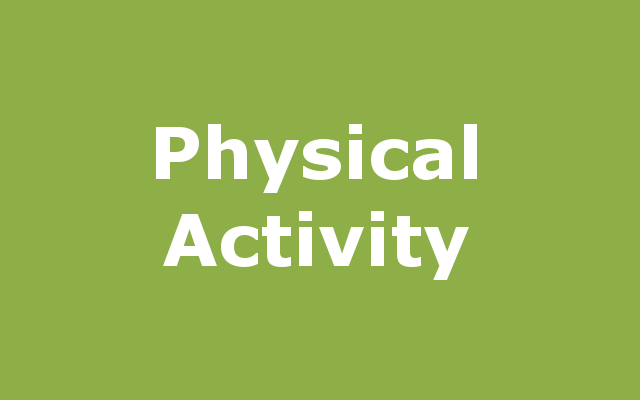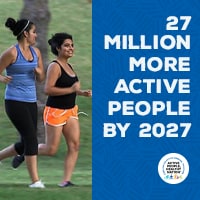Nutrition, Physical Activity, and Obesity

Quick Links

|

|

|
Health professionals recognize the benefits associated with a healthy eating plan based on the Dietary Guidelines for Americans. Proper nutrition promotes the optimal growth and development of children. A healthy diet also helps reduce the risks for many health conditions.1
Regular physical activity helps improve a person's overall health and fitness, and reduces the risk for many chronic diseases.2 Nationally in 2015, only 20% of adults reported that they participated in enough aerobic and muscle strengthening exercises to meet guidelines3 and about half of high schools students were physically active at least one hour per day on five or more days per week4.
A person whose weight is higher than what is considered as a normal weight adjusted for height is described as being overweight or having obesity.5 Body Mass Index (BMI) is the weight-to-height ratio most commonly used to estimate and screen for overweight and obesity. Overweight is defined as a BMI of 25 or higher; obesity is defined as a BMI of 30 or higher.
Regular physical activity helps improve a person's overall health and fitness, and reduces the risk for many chronic diseases.2 Nationally in 2015, only 20% of adults reported that they participated in enough aerobic and muscle strengthening exercises to meet guidelines3 and about half of high schools students were physically active at least one hour per day on five or more days per week4.
A person whose weight is higher than what is considered as a normal weight adjusted for height is described as being overweight or having obesity.5 Body Mass Index (BMI) is the weight-to-height ratio most commonly used to estimate and screen for overweight and obesity. Overweight is defined as a BMI of 25 or higher; obesity is defined as a BMI of 30 or higher.
1. U.S. Department of Health and Human Services and U.S. Department of Agriculture. 2015-2020 Dietary Guidelines for Americans. 8th Edition. December 2015.
2. Physical Activity, CDC. 1/31/18.
3. BRFSS Prevalence and Trends Data, Behavioral Risk Factor Surveillance System, CDC, 2/16/18.
4. Youth Online, Youth Risk Behavior Surveillance System, CDC, 2/16/18.
5. Overweight and Obesity Statistics. National Institute of Diabetes and Digestive and Kidney Diseases. July 2017.
2. Physical Activity, CDC. 1/31/18.
3. BRFSS Prevalence and Trends Data, Behavioral Risk Factor Surveillance System, CDC, 2/16/18.
4. Youth Online, Youth Risk Behavior Surveillance System, CDC, 2/16/18.
5. Overweight and Obesity Statistics. National Institute of Diabetes and Digestive and Kidney Diseases. July 2017.
Staying in control of your weight contributes to good health now and as you age. Individuals who are at a healthy weight are less likely to:
- Develop chronic disease risk factors, such as high blood pressure and dyslipidemia.
- Develop chronic diseases, such as type 2 diabetes, heart disease, osteoarthritis, and some cancers.
- Experience complications during pregnancy.
- Die at an earlier age.6
6. Nutrition and Weight Status Overview. Healthy People 2020. 2/9/18.
Nutrition, physical activity, and weight status are tracked at the national and state levels primarily through two surveys:
National information is also tracked through the National Health And Nutrition Examination Survey (NHANES), CDC/NCHS and the National Health Interview Survey (NHIS).
- Youth Risk Behavior Surveillance System (YRBSS), CDC Division of Adolescent and School Health.
- Behavioral Risk Factor Surveillance System (BRFSS), CDC National Center for Chronic Disease Prevention and Health Promotion
National information is also tracked through the National Health And Nutrition Examination Survey (NHANES), CDC/NCHS and the National Health Interview Survey (NHIS).
Nutrition
Physical Activity
Weight Status
Physical Activity - Adults (BRFSS)
- Physical Inactivity - Crude Rates
- Physical Inactivity - Age-adjusted Rates
- Recommended Physical Activity - Crude Rates
- Recommended Physical Activity - Age-adjusted Rates
Weight Status - Adults (BRFSS)

New Jersey
- Department of Health, Nutrition and Fitness
- Department of Education, Student Learning Standards: Comprehensive Health and Physical Education
- Department of Transportation, Safe Routes to Schools
- New Jersey School Nutrition Association
- Rutgers Child Health Study

